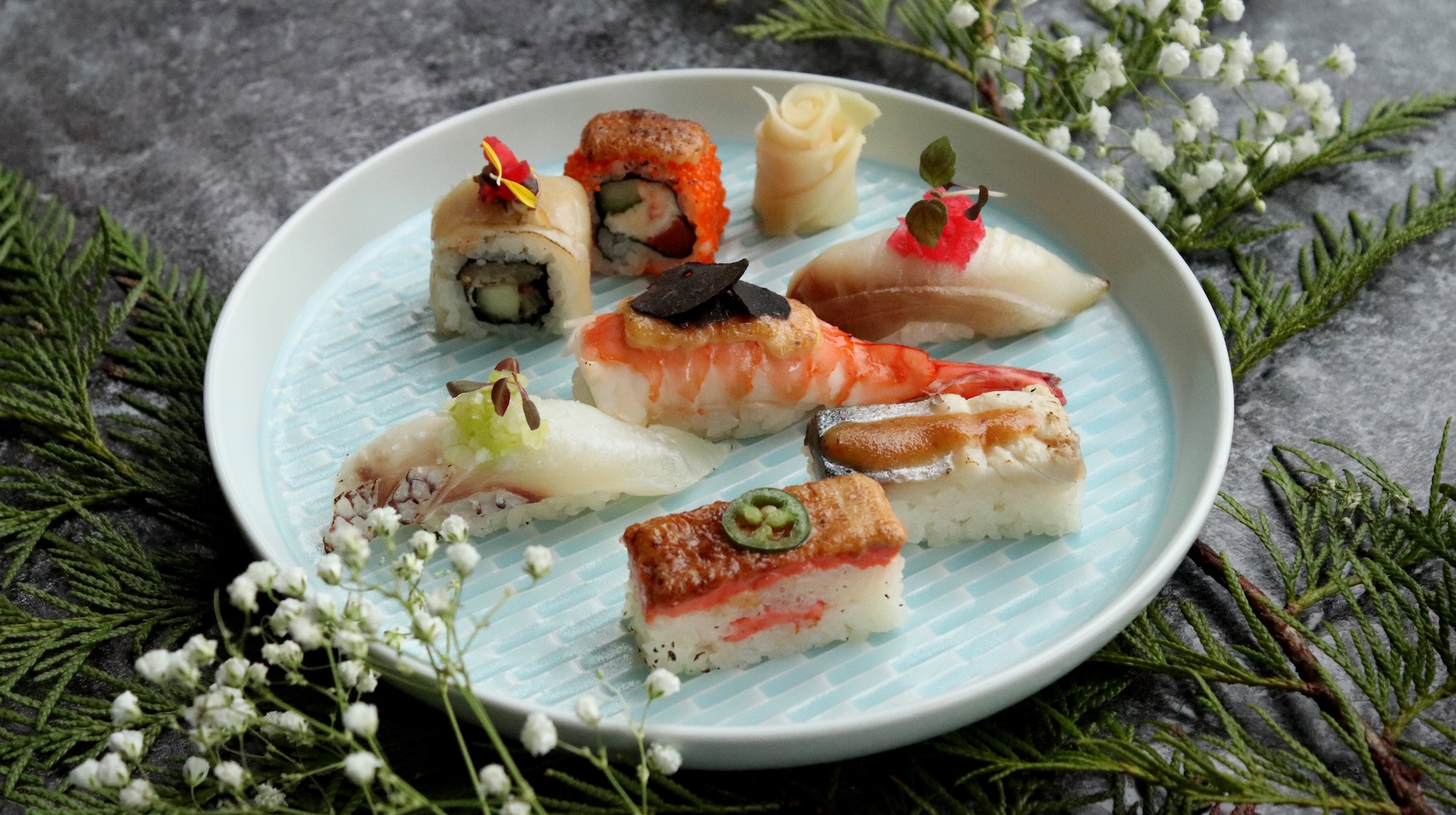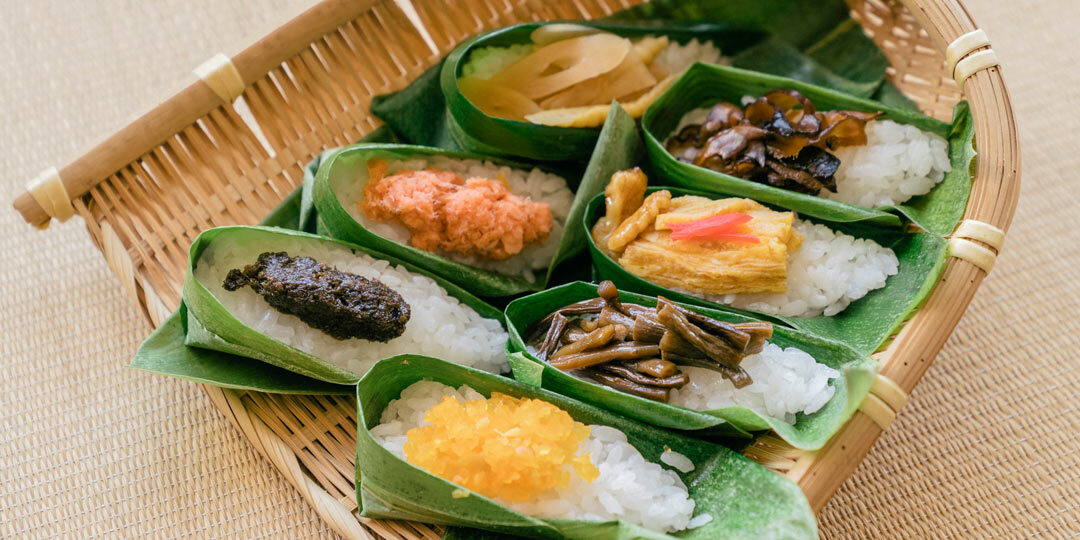Traditional Japanese Sushi Rolls – What comes to your mind when you hear traditional Japanese food? While Japanese cuisine is extremely varied, most people will conjure up images of sushi rolls that are an important part of the food culture. Believe it or not, many tourists visiting Japan have ‘eating at sushi restaurants’ as one of the must-haves in their things-to-do list.
The globalization of sushi across the world and documentary films like ‘Jiro Dreams of Sushi’ have propelled the popularity of this traditional cuisine. Many sushi-based food chains all over the world, like Yo! Sushi is globalizing the sushi phenomenon. Food enthusiasts look at the traditional sushiya as the mecca where they achieve a sense of enlightenment. It’s not just the food, but the entire experience that makes sushi such a popular cuisine. Almost as popular in the world as sushi rolls have been the assignment help sites. You can find the best coursework writing service in UK or other countries. Millions of students now delegate their work to specialists.
Japanese sushi chefs are highly regarded and respected because it takes them more than 10 years of training to acquire such skills. So, watching the master chefs in action and being able to communicate with them is an important part of the sushi experience. If you are a beginner, here is a list of 10 must-try traditional Japanese sushi rolls to order.
Table of Contents
Tuna Sushi Roll (Tekka Maki)

Credits: the spruce eats
Tuna Sushi Roll, known as Tekka Maki in Japanese, contains only one filling and in this case, it is raw tuna. Interestingly, meat from various parts of tuna fish looks and tastes different due to the amount of fat in them. For Tekka Maki, the chefs typically use the lean and red-colored tuna meat. The other ingredients include seasoned sushi rice and nori, a type of edible seaweed.
Tekka Maki looks pretty with red meat in between white rice covered in a green nori sheet. The name ‘tekka’ which means hot iron seems to have been derived from the red color. In the past, tuna was considered the poor man’s food because it was easily available. However, the popularity of tuna sushi rolls turned it into a must-sought after food in Japan and worldwide.
Cucumber Sushi Roll (Kappa Maki)
Cucumber rolls are known as Kappa Maki in Japanese and they comprise of thin strips of Japanese cucumber in between seasoned rice, wrapped in nori sheets. As there’s no fish used in this sushi recipe, it is a great option for vegetarians and those who are uncomfortable with the idea of eating raw fish. The word ‘kappa’ is a combination of two words that mean ‘river’ and ‘child’. It seems to have been derived from Japanese folklore and is associated with cucumber.
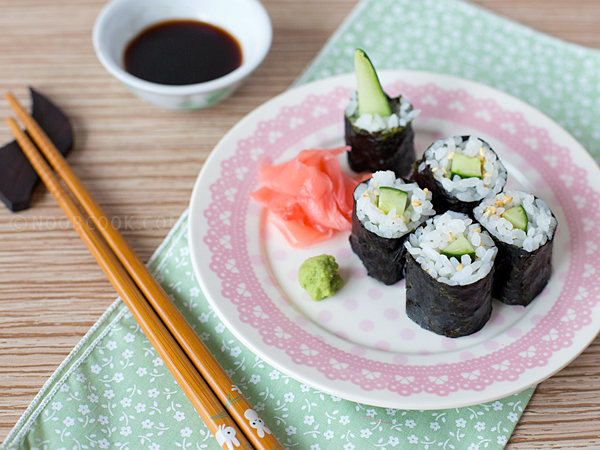
Credits: NOOB COOK
The Kappa Maki recipe calls for Japanese cucumbers that are slender, long, thin-skinned and contain less to no seeds. If Japanese cucumbers are not available, chefs often use Persian or English cucumbers as substitutes.
Dried Gourd Sushi Roll (Kanpyo Maki)
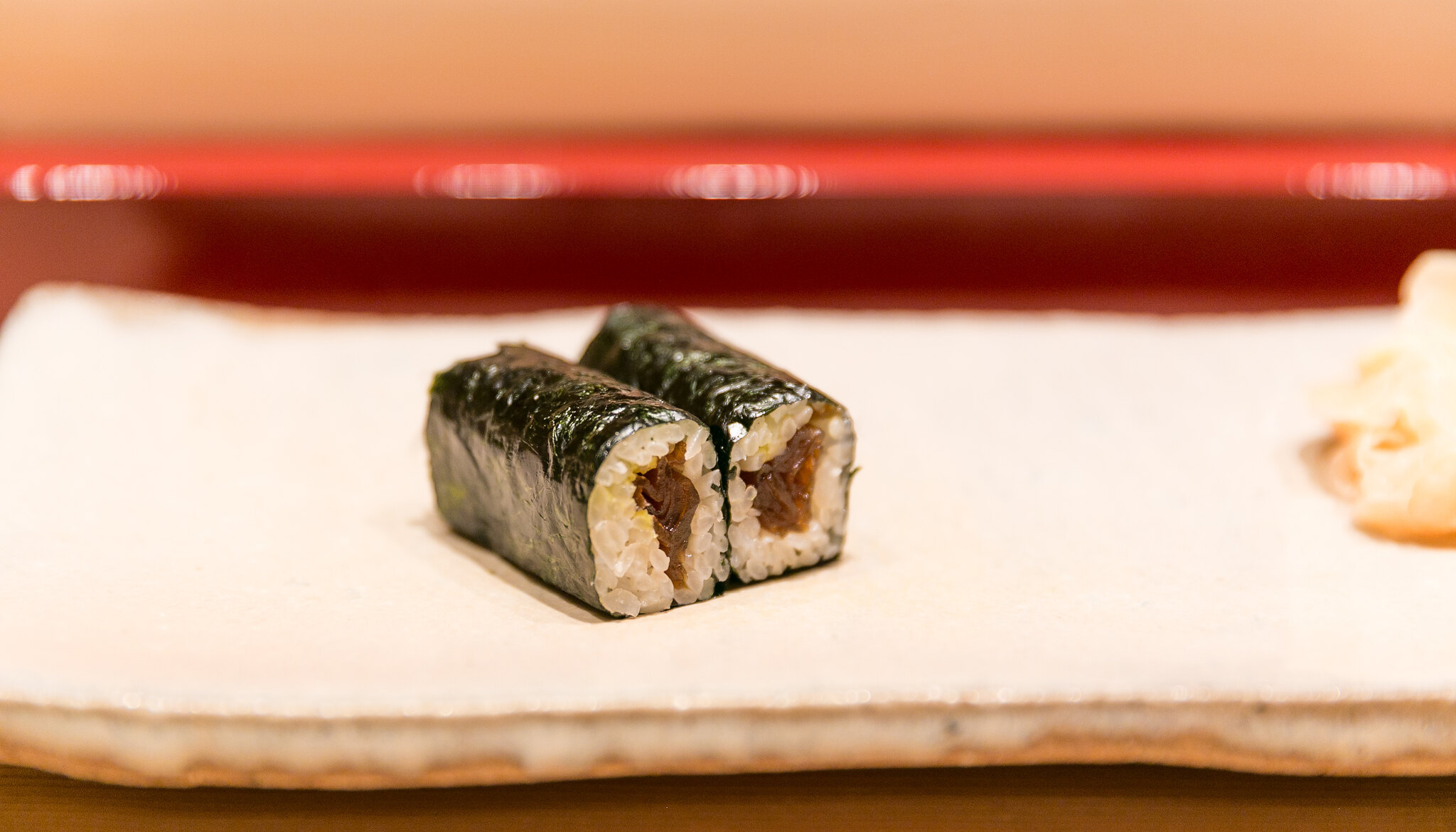
Credits: City Foodsters / Flickr
If you are hearing this for the first time, I don’t blame you because this is one of the most traditional forms of Japanese sushi rolls that you will not usually find in every American sushi restaurant. Dried Gourd Roll, also known as Kanpyo Maki in Japanese, comprises of dried strips of calabash fruit, which is a kind of gourd. The gourd strips are sold dehydrated and you can find them at any Asian grocery store. As they are dried, they can also be bought online.
The dried gourd shavings must be hydrated for several hours and seasoned well with soy sauce, sugar, and rice wine before using in sushi rolls. As there’s no raw fish or seafood involved, it’s a great option for vegetarians and vegan lovers.
Eel Sushi Rolls (Unagi or Anagi)
Eels, both saltwater (anagi) and freshwater (unagi) are considered as delicacies in Japan and they are used in a variety of traditional dishes including sushi. When used as ingredients in sushi rolls with cucumber, they are known as unakyu or anakyu maki. Eel is rarely eaten raw, and it is usually steamed or marinated in some way before using in sushi.
If you haven’t eaten eel before, you may not like it for its slimy appearance but give it a try and the taste will bowl you over. Unagi (freshwater eel) has a rich and bold flavor, while anagi (saltwater eel) has a sweet taste and soft texture.
Tuna And Scallion Sushi Roll (Negitoro Maki)

Credits: Sushi Ichi
Known as Negitoro Maki in Japanese, Tuna and Scallion Roll is one of the traditional classics you can find in any authentic sushi restaurant. It is prepared by scraping the meat from the skin and bones of tuna’s belly. Chefs may often use otoro or fatty tuna in its place and mince the meat with a sharp knife. Mix finely chopped scallions or green onions, and sesame seeds to make the negitoro filling.
This delicious mix is filled inside seasoned sushi rice with nori on the outside to create one of the most mouthwatering delicacies. The roll is then cut into 6-8 pieces and served with pickled ginger, wasabi, and soy sauce.
Fermented Soybean Sushi Roll (Natto Maki)
If you have eaten westernized sushi rolls, you will be surprised at some of the weird traditional options available in Japan and one such delicacy is the fermented soybean roll. Known as Natto Maki in Japanese, the sushi roll’s main ingredient is steamed soybeans that are fermented for several days. A bacteria called natto bacillus aids in the fermentation process, and that explains the name – Natto Maki.
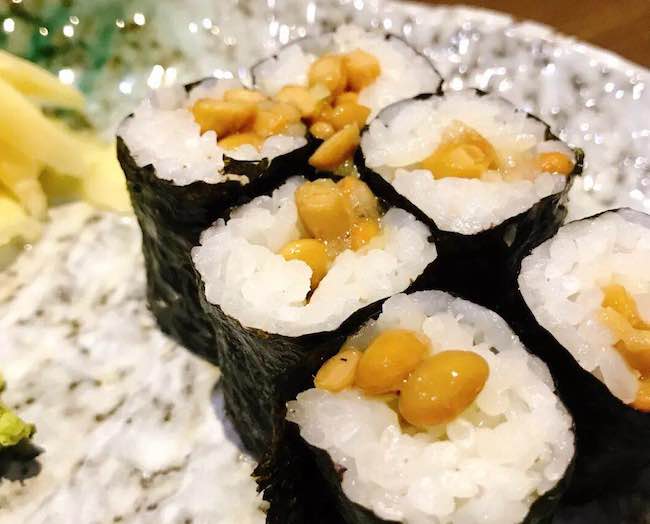
Credits: Easy HomeMade Sushi
The fermented soybeans are soft and brown in color, and they are covered with a slimy mucous-like matter. It has a pretty strong flavor like that of stinking socks. I agree that eating the fermented soybeans calls for an acquired taste, hence not everyone can try this traditional sushi roll. However, if you are an adventurous eater, give it a try and your body will thank you for all the health benefits it contains.
Pickled Plum And Cucumber Roll (Umekyu)
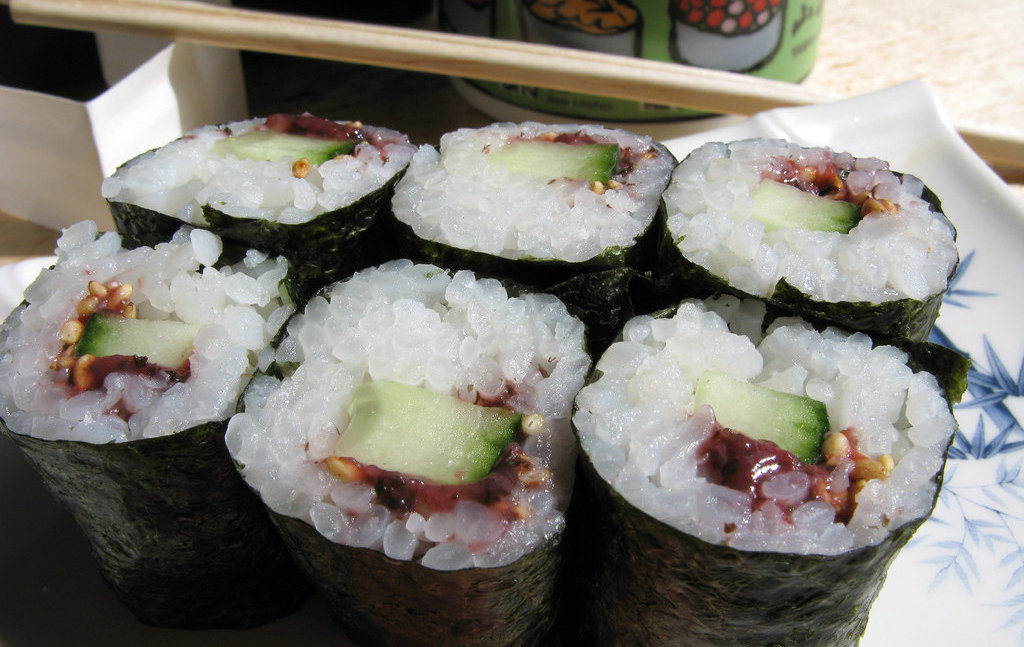
Credits: Frank Farm / Flickr
If you are game for trying all the traditional Japanese sushi rolls, you must not miss this one. This dish is called Umekyu because it contains two ingredients – pickled plum (umeboshi) and cucumber (kyuri). It has a unique flavor that you may not have come across before. The pickled plum tastes sweet and cucumber adds a dash of freshness to the sushi roll. It is a great option for vegetarians and vegans alike.
Another popular variation of the dish is called umeshiso and it comprises of pickled plum (umeboshi) and fresh sisho leaves. The flavor of pickled plum contrasts beautifully with the crisp taste of sisho leaves to create mouthwatering combination.
Pickled Daikon Sushi Roll (Oshiko Maki)

Credits: the spruce eats
Vegetarians often live under the misconception that sushi means raw meat, which is not true. There are several varieties of fresh fruits, vegetables and pickled options used in making sushi rolls, and pickled daikon is an amazing example. Also known as Shiko Maki in Japanese, pickled daikon sushi roll comprises of pickled radish as the main ingredient. Daikon resembles a large white carrot that turns yellow when pickled with salt.
The pickled daikon radish is known as oshinko or oshinka. It has a unique flavor that is perfectly complemented with seasoned white rice and nori. If you love traditional Japanese food, pickled vegetables are must-haves. Besides daikon radish, some of the other vegetables used for pickling are cabbage, carrots and cucumbers.
Futomaki Sushi Rolls
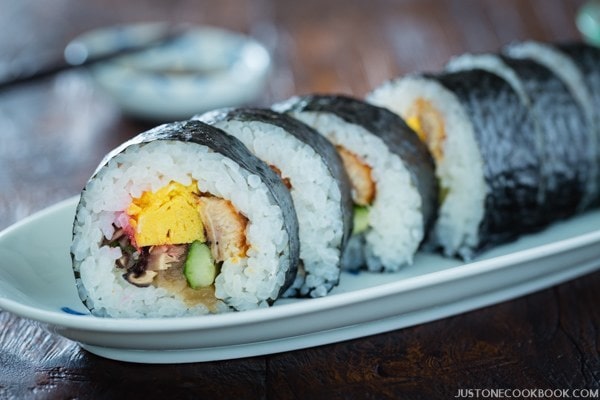
Credits: Just One Cookbook
This is a thick and fat sushi roll comprising of several delicious fillings, hence it is much bigger than any other sushi rolls mentioned above. Although it can be eaten throughout the year, Futomaki roll is known as the main dish for Setsubun, the day when the Japanese pray for a good year ahead, without any disasters and diseases. Thus, it is also known as the ‘good luck roll’ believed to be the harbinger of good times.
Some of the common fillings used in sushi rolls are cooked baby spinach, egg omelet (tamagoyaki), seasoned daikon radish, sweet dried fish (senkura denbu), cucumber, shitake mushrooms, kampyo (gourd strips), and so on.
Temaki (Hand Rolls)
These are hand rolls that are folded in the shape of a cone instead of a cylinder. They comprise of less rice and the fillings are arranged diagonally over the rice, slightly protruding out of the cone. Some of the common filling options include scallions, cucumbers, tuna, salmon, and so on.
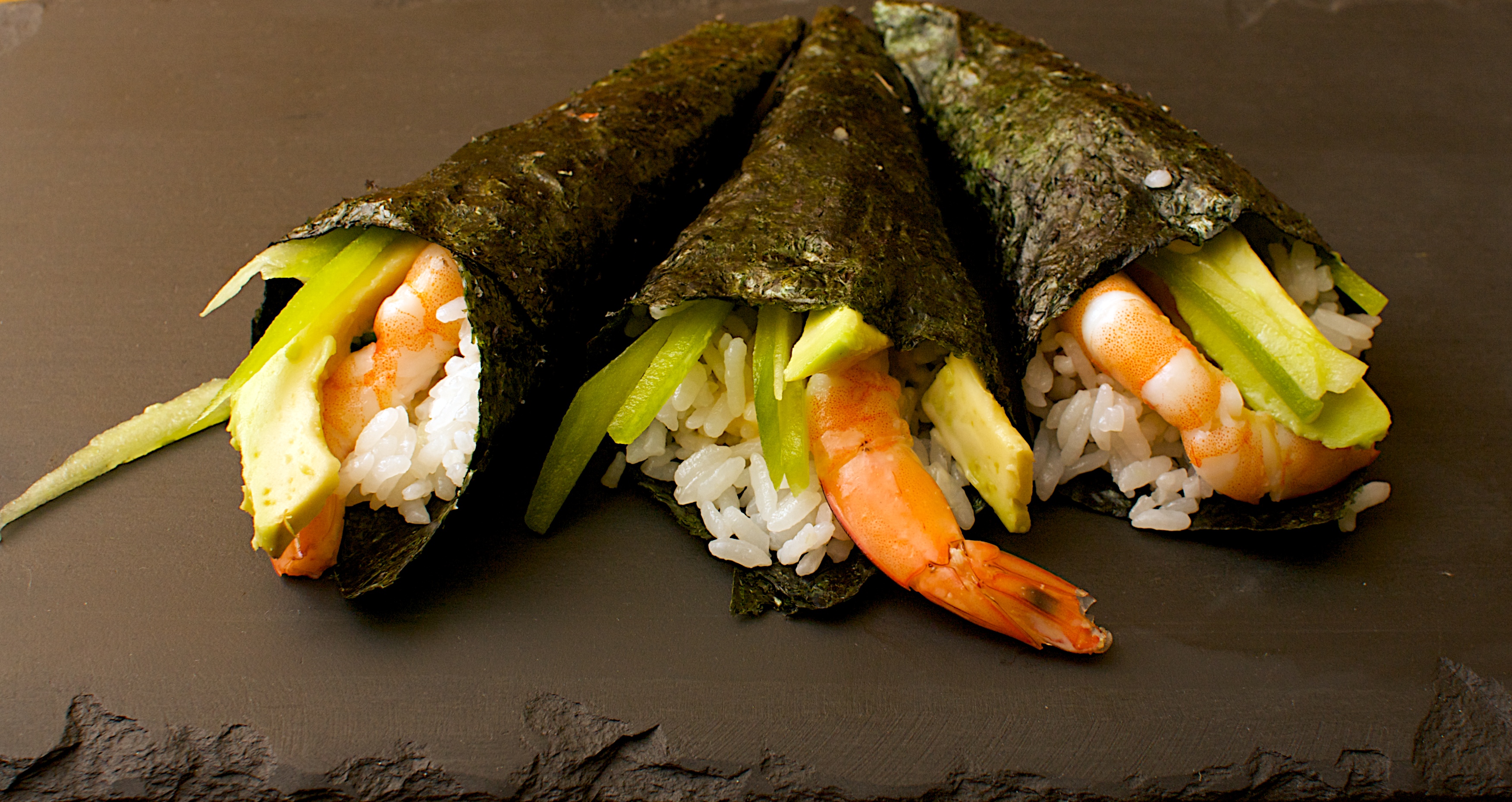
Credits: Jono and Jules
Conclusion
If you wish to get the taste of traditional Japanese sushi rolls, you must eat at a restaurant run by Japanese sushi chef or visit Japan to experience the authentic flavors. Unfortunately, most of the sushi restaurants in foreign countries offer specialty sushi rolls that is fusion of traditional and westernized ingredients. Those who have a knack for cooking can prepare traditional sushi rolls at home. You just need to grab a few ingredients from the nearest Asian grocery store and our recipes to get started!

James
James is a sushi enthusiast and owner of sushi blog names easyhomemadesushi.com. He has been to Japan several times and loves Japanese food and culture. He is also a passionate writer and likes to share his experiences and knowledge through his blog.


